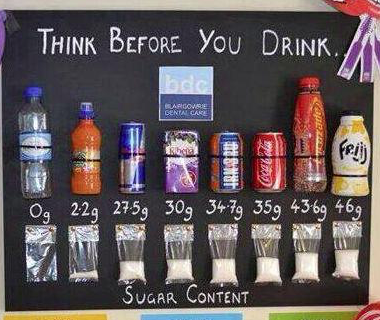What Does 30g of Sugar Look Like: Understanding Sugar Content in Different Foods
Sugar consumption is a topic of concern for many individuals, as excessive sugar intake has been linked to various health issues. One way to manage sugar consumption is by understanding the amount of sugar present in different foods. In this article, we will explore the question, "What does 30g of sugar look like?" We will delve into the concept of sugar content, provide examples of foods containing 30g of sugar, and offer healthier alternatives for reducing sugar intake.

What does 30g of sugar look like?
1. The Importance of Monitoring Sugar Intake:
a. Impact on Health:
Consuming excessive sugar has been associated with obesity, diabetes, heart disease, and other health problems. Monitoring sugar intake is crucial for maintaining a healthy lifestyle.
b. Hidden Sugars:
Sugar can be found in various forms and may be present in unexpected foods, such as processed snacks, condiments, and beverages. Being aware of hidden sugars is essential when assessing sugar content.
2. Understanding Sugar Measurements:
a. Grams vs. Teaspoons:
While sugar content is commonly measured in grams, it can be challenging to visualize this measurement. Converting grams to teaspoons can help individuals better understand sugar quantities.
b. 30g of Sugar:
30g of sugar is roughly equal to 6 teaspoons. Visualizing this amount can help individuals make informed decisions about their sugar consumption.

Sugar Table
3. Examples of Foods with 30g of Sugar:
a. Soft Drinks:
Many carbonated beverages contain high sugar content. A typical 12-ounce can of soda often contains approximately 30g of sugar, which is equivalent to 6 teaspoons.
b. Breakfast Cereal:
Certain breakfast cereals marketed towards children can be surprisingly high in sugar. Some brands have 30g of sugar per serving, making it essential to read nutritional labels.
c. Sweetened Yogurt:
Flavored yogurts can contain significant amounts of added sugar. A single serving of sweetened yogurt might contain around 30g of sugar, making it a potentially high-sugar option.
d. Chocolate Bars:
Various chocolate bars on the market contain substantial sugar content. Some standard chocolate bars can have approximately 30g of sugar per serving.
e. Fruit Juice:
While fruit juice may seem like a healthy choice, it can be high in natural sugars. A cup of fruit juice often contains around 30g of sugar.
4. Healthier Alternatives:
a. Fresh Fruits:
Opting for fresh fruits instead of processed snacks or sweetened beverages can satisfy sweet cravings while providing essential nutrients and fiber.
b. Unsweetened Options:
Choosing unsweetened versions of yogurt, cereal, and other food items can significantly reduce sugar intake.
c. Water and Infusions:
Staying hydrated with water or flavored infusions (using fresh fruits or herbs) is a sugar-free alternative to sugary drinks.
d. Dark Chocolate:
Instead of milk chocolate, which often contains higher sugar content, selecting dark chocolate with a higher cocoa percentage can be a healthier option.
Understanding the concept of sugar content and its impact on health is essential for managing sugar intake. By visualizing what 30g of sugar looks like and identifying foods with high sugar content, individuals can make informed decisions about their diet. Incorporating healthier alternatives, such as fresh fruits, unsweetened options, and water, can help reduce sugar consumption and promote overall well-being. Remember, moderation and awareness are key when it comes to sugar consumption.